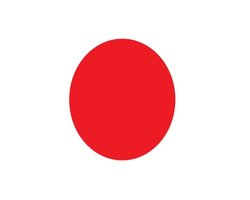Figures showing a Japanese economic slowdown for Q3 have analysts wondering whether Keynesian-inspired Abenomics is effective for the long haul.
According to the Japanese Government’s Cabinet Office, GDP (gross domestic product) grew at an annualized rate in the third quarter by just 1.9%, compared to 3.8% during the second quarter.
Abenomics refers to Japanese Prime Minister Shinzō Abe’s economic plan, which involves:
- aggressive quantitative easing by the Bank of Japan
- the devaluation of the yen
- boosting public infrastructure spending, and
- encouraging private investment.
Mr. Abe has been Prime Minister since December 26th, 2012.
While the economy enjoyed healthy economic growth during this year’s second quarter, household incomes have not. According to official statistics, household consumption increased just 0.1% during the third quarter compared to the second.
Most Japanese citizens say they will determine whether Abenomics really works if they see this reflected in their personal incomes.
During the first few months of this year everything looked great for Japan. Household spending was rising, the yen weakened and the stock market kept going up and up.
Japanese economic slowdown – were Q1 and Q2 just blips?
However, fourth quarter results have made those initial healthy months look like a one-off fluke. Japanese workers are facing higher food and energy prices without matching wage rises.
Consumer confidence last month was at its lowest level for nearly a year.
According to the Ministry of Labor, base wages dropped 0.3% in September 2013 compared to September 2012. Summer bonuses were above average, however, bonuses do not give people the confidence to go out and spend if their regular salaries remain low.
Deflation fears ebbed somewhat as prices rose. However, most of the price increase came from imported goods, such as raw materials and energy. For deflation to be permanently gone domestic demand has to grow.
Looming sales tax rise may boost demand temporarily
In April next year sales tax (consumption tax, VAT) will rise to 8% (from 5%). Economists expect a boost in demand before they are implemented.
From April onwards, though, the impetus will probably die as consumers face higher prices.
Signs that Japanese wages may eventually increase
Japan’s unemployment is very low compared to the OECD average, meaning there are fewer applicants to fill vacant posts, and corporate profits have risen significantly. Also, Shinzō Abe is facing growing political pressure to do something about wages.
Unemployment was 4% in Japan in September, compared to 5.2% in Germany, 7.6% in the UK, 7.3% in the USA (October) and 11% in the European Union (average of 28 Member States). See this graph showing unemployment in Japan, USA and Europe.
In an interview with CNNMoney, Marcel Thieliant of Capital Economics said the Japanese economic slowdown follows “unsustainably strong growth in the first half of the year and is therefore no cause for concern,” he added that weaker private consumption and exports were to blame for the slowdown.
Japan’s councillor of the cabinet secretariat, Tomohiko Taniguchi, told the BBC that the country is still on track for growth despite the recent slowdown. Taniguchi added “A year ago this time, the third quarter figure for 2012… we were talking about negative growth of more than 3%.”
Japan since 1980, Shinzō Abe and Abenomics
Before taking office in December 2012, Shinzō Abe, who had been prime minister from 2006 to 2007, announced plans to kick-start the recession-stricken country out of decades of deflationary stagnation.
Abe is concentrating on trying to turn his country’s economy round.
After spectacular economic growth in the 1980s, Japan went into a deflationary standstill that lasted over two decades, with low growth and weak consumer spending, despite several attempts from 1992 to 2008 by different Japanese administrations to kick-start the economy.
Abenomics is a Keynesian-inspired plan that takes a three-arrow approach to boost the economy with monetary, fiscal and structural policies. It has a stimulus package worth $210 billion (20.2 trillion yen), $116 billion of which comes in the form of government spending on infrastructure.
The Bank of Japan raised its inflation target from 1% to 2%. The government plans to create 600,000 jobs within the next 24 months.
However, when the yen starting depreciating at the beginning of this year, the governments of rival nations became concerned about some of the more ambitions ideas being expressed by politicians regarding the package, including the purchase of foreign government bonds by the Bank of Japan, which they feared could trigger a currency war.
According to the Council on Foreign Relations, some economists wonder whether the package might further increase the country’s already massive debt and trigger hyperinflation. Hyperinflation is inflation of at least 50% per month.

